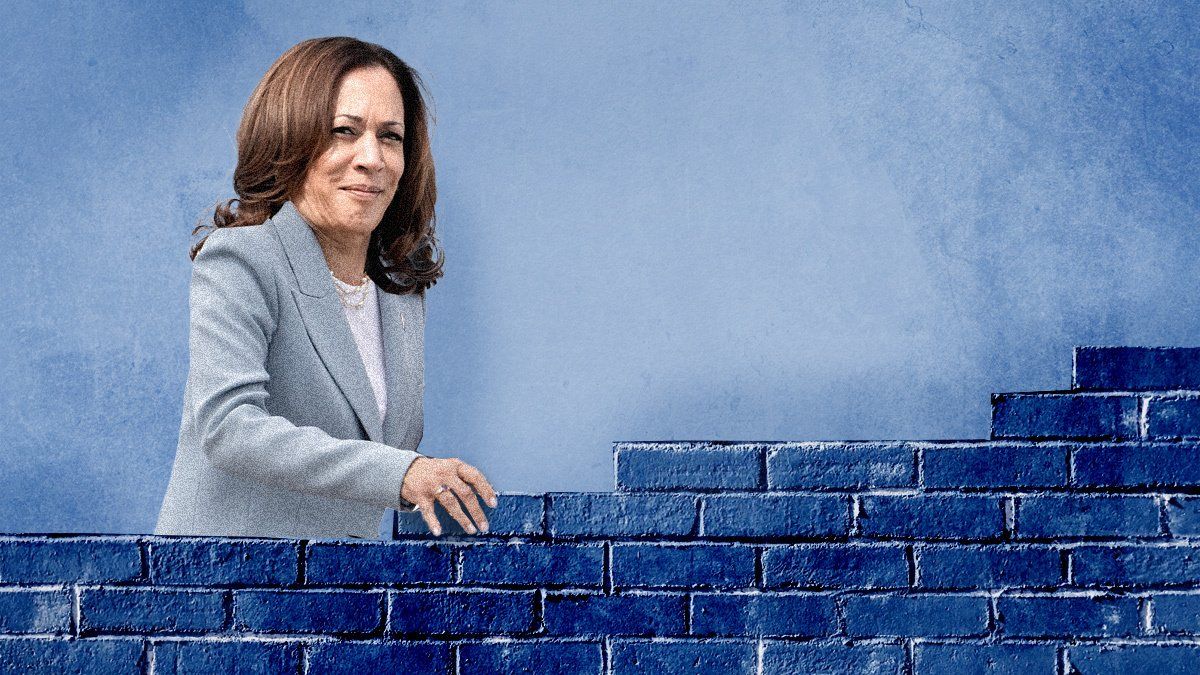In the 12 days since Joe Biden called it quits, Kamala Harris has recovered the ground Biden lost during his disastrous debate, successfully reintroduced herself to distraught and dispirited Democrats, dominated media coverage, and now has a better approval rating than her opponent, Donald Trump.
So far, so good. She raised more than $200 million in a week, won the support of senior Democratic leaders and the endorsement of the United Auto Workers, and polls now show her in a close race. Republicans, who saw Biden’s replacement as a sucker punch, carelessly attacked her as a DEI hire, and then doubled down by questioning her racial identity. Would-be vice president JD Vance is polling terribly, while Harris is considering several excellent candidates as she looks forward to the Democratic National Convention in Chicago, where she will have a larger stage from which to sell herself to Americans.
Everything is going her way, but it may not matter if she can’t rebuild the "blue wall." In seven of the eight presidential elections since 1992, Democrats won the 18 states in the so-called blue wall — including populous California and New York — giving them a huge advantage in the struggle for the electoral college that decides US elections. In 2016, though, Trump won Michigan, Pennsylvania, and Wisconsin, knocking a hole in that wall and taking the presidency from Hillary Clinton.
Three key states
In 2020, Dems bet that Biden, a son of Scranton, Pa., would be able to take back those states, which he did, but just barely. He won the national popular vote by 7 million, but he won Pennsylvania and Wisconsin by just a single point, and Michigan by three.
Trump was leading in all of them last month when longtime pollsters met with Biden at his beach house, and he decided to throw in the towel.
Much of what happens next will be focused on those three states. Arizona, Nevada, and Georgia may also be up for grabs, but neither side can afford to lose focus on the blue wall. That’s why the Republican National Convention happened in Milwaukee, and why Harris held her first rally there.
The election may ride on the whims of a couple hundred thousand fickle swing voters in the suburbs of Milwaukee, Detroit, and Philadelphia. Pundits often write about Biden’s pitch to white working-class voters, but those voters stuck with Trump in 2020. The swing voters are white suburbanites who voted for Trump in 2016 and Biden in 2020.
Kitchen table issues
Swing voters don’t like Trump, thought Biden was too old, and have not yet made up their minds about Harris, says John Conway, director of strategy for Republican Voters Against Trump, who has been sitting in on focus groups.
“She’s going to run with the understanding that she has to consolidate voters in these Midwestern states by talking about how she’s going to deal with kitchen table issues,” he says.
In her first TV ad buy, announced Tuesday, she hit those issues, portraying herself as a fearless prosecutor ready to fight for seniors and health care. Trump’s first ad buy, though, hit at Harris’ biggest vulnerability: immigration. Most Americans think there are too many immigrants coming into the country, and the Republicans will try to make Harris own that, portraying her as Biden’s border czar, although the facts don’t bear that out.
Weak on immigration
Detailed issue polling from Blueprint, a Democratic data and polling firm, shows that Harris is tied with Trump on the economy, ahead by 12 points on abortion, but behind by 12 points on border security. Pollster Evan Roth Smith thinks she needs to attach herself to recent Biden measures that make it harder for asylum-seekers to cross into the United States.
“The swing voters, you kind of need to give them everything they want, right?” he says. “This is a knife-edge election.”
Trump still has the advantage, says Clayton Allen, Eurasia Group’s US director. Allen will be watching for signs that voters’ enthusiasm for Harris holds after the DNC in August. If Harris maintains her momentum and looks like she can increase turnout from Black voters, she might open up paths to victory that do not include the blue wall.
“Georgia, for instance, suddenly that’s a state that maybe looks like it’s more competitive than it was a few weeks ago,” says Allen. “Opening up alternative paths to 270 [electoral college votes] is the most important thing right now because she needs to have more than one way to get there to have a good shot at potentially winning.”
She is working on that. On Tuesday, Harris held a rally with rapper Megan Thee Stallion in Atlanta. Public polls show Trump safely ahead in Georgia, but Democrats there think they have a chance, and Trump will hold a rally at the same venue on Saturday, which he likely isn’t doing for fun.
The polls in the days ahead will tell us whether Harris will have reason to come back to Atlanta or will find herself slugging it out in the Midwestern suburbs that Hillary Clinton lost in 2016.
